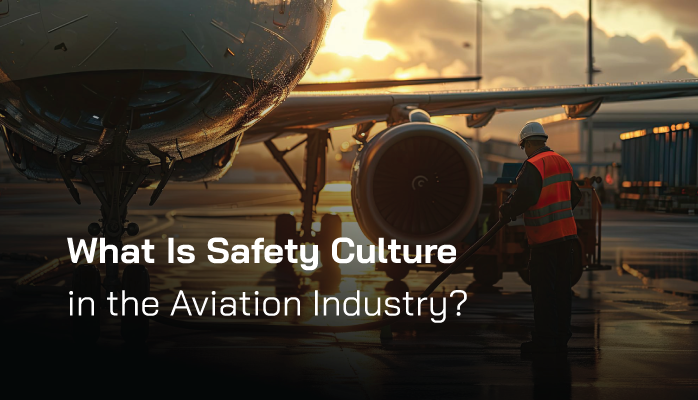A Culture of Respect

In order to understand the idea of safety culture within the aviation industry, we must first understand the respect attributed to:
- Pilots;
- Mechanics;
- Controllers;
- Dispatchers; and
- All others needed to make the system function.
The idea of respect for
- the power of nature,
- of those who went before us, and
- of the capabilities of the aircraft
serve to motivate the industry to move forward, and embrace safety in the outcome.
Related Aviation Safety Culture Articles
- 5 Characteristics of Effective Aviation Safety Cultures - With Free Survey
- Reactive or Proactive Safety Culture? 5 Creative Ways to Tell
- 6 Types of Safety Culture in Aviation Safety Management System
Important Lessons Learned From the Pioneers
Mother Nature can be a brutal teacher, but when approached with reverence, she does have many lessons to teach. Unfortunately, in aviation, many of the rules have been written in blood, and we can pay respect to those who lost their lives by learning from their mistakes.
The better lessons don't have to originate from fatal events. Hazard reporting programs and subsequent lessons in publicly accessible lessons-learned libraries have the potential to save many lives.
Aviation Safety Messages Not Be Merely Fear-Focused
Just like any tool, the aircraft can be abused or treated concerning doing great things. The idea all of these things have in common is a humble nod to the power and privilege of flight.
I believe the topic of safety in the aviation industry goes much deeper than fear-based motivation. By nature, aviation is a dangerous field.
Most pilots approach the skies, in the same way, surfers approach the ocean: with deep respect. Although man has reached many technological advances in the way of flight, there is one thing that man will never be able to control, and that is the complete power of the skies. This reverence of the air and the dangers that accompany flight allow a pilot to see through a different lens than the obscured lens of fear.
In recognition of both the power and the cruelty of the air, pilots show their due deference to the forces of nature. Therefore, the proper motivation would be a respect-based one with safety chief among its outcomes. This mentality creates a culture with safety at its center among every sect of the aviation world.
Safety Policies and Procedures Surface as Events Occur
There is wisdom within the aviation industry that has come from years and years of trial and error. Experience has been a shrewd and sometimes cruel teacher.
Behind most safety policies and procedures are stories of those who have gone before us and paid for this knowledge with their lives. These stories are painful reminders of the dangers of flight. This creates a deeper level of esteem for practices set in place to create an environment of safety. It also allows the industry to be proactive in identifying hazards that could lead to accidents.
Aviation Full of Inherent Risk

In the aviation industry, the risk is inevitable, but that does not mean that it can’t be mitigated. In understanding the capabilities of the aircraft, we are able to avoid many hazards before they even reach us. Over time, flying an aircraft becomes like spending time with an old friend. You get to know it as you know yourself. These machines are very powerful and when treated with respect can be used very efficiently and very safely.
When understood correctly, safety is an organic piece of aviation culture.
This industry is composed of individuals with different motivations and different uses of the airplane, but there is something that unites us. There is an overarching idea of respect that connects each member of the aviation world.
As a new, inexperienced pilot, I remember looking at the skies as a mysterious and hostile place. As I continue to gain experience and hours, I learn how to go with the grain of the heavens rather than against them.
Related Aviation Proactive Risk Management Articles
- What Is Proactive Risk Management in Aviation SMS
- From Reactive to Proactive Risk Management in Aviation SMS
- The Secret Bias That Hurts Proactive Risk Management
Adopting Safety Culture Becomes Way of Life
Yes, aviation can be a very dangerous field, but when approached with an attitude of respect in all of its areas it is easier to mitigate risk. The fear of the unknown begins to shrink as experience grows.
It does not make us lesser pilots to admit that we cannot control everything around us; on the contrary, I believe one of the things that makes a great pilot is a humble attitude. In my opinion safety culture revolves around
- respect of the skies,
- respect for the aviation pioneers, and
- respect for your aircraft.
Safety culture in the aviation industry is composed of individuals, and safety is a lifestyle rather than a gimmick to be bought into.
Not all employees are motivated by notions of respect or care whether your operations improve safety performance. What can safety managers do with these types of apathetic employees? These types of employees are motivated by other means, such as:
- career advancement;
- bonuses; and
- salary increases.
Managers can monitor employee safety performance and tie their performance levels to these employees' goals.
Last updated Feb 2025.








